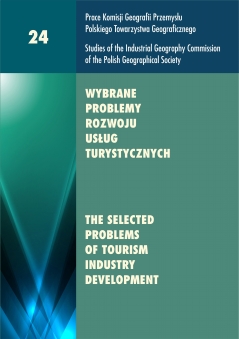The Role of the Krakow Airport in the Development of a Knowledge-based Economy. An example of Changes in the Transport Infrastructure – Implications for the Development of Tourism
DOI:
https://doi.org/10.24917/20801653.24.6Keywords:
airplane, airport, Krakow, tripsAbstract
Thanks to the development of technology, the twentieth century witnessed a rapid increase inthe mobility of society: it facilitated and made changing the place of stay faster. This progress broughtabout the increase in the number of airplanes and airlines, increased the availability, speed, comfortand safety of journeys, and also caused the decrease in costs. Building new regional airports and modernizing the already existing ones shortens the time of journeys and lengthens the relaxation time. Thedevelopment of airports makes many accompanying traveller facilities come to existence as well.The Kraków Airport airport is the second biggest airport in Poland. It’s connected to 90 cities in 28countries. It serves about 3 million passengers annually. In the first six months of 2012, 1,606,861passengers were served by the Kraków Airport. It’s 18% more than in the first six months of 2011.The purpose of the article is to show - on the example of the Kraków Airport - how the meaning andfunctions of regional airports in Poland, as well as the current changes in the infrastructure of airbornetransport, can add onto the development of tourism. This article also shows the number of passengersusing the airport, the current directions of national, European and charter connections. The airport inBalice is described in comparison to other Polish regional ports and the prognoses for the future andthe plans to expand of the depicted airport will be mentioned. In the summary, the implications for thedevelopment of tourism are shown.Downloads
References
Alejziak, W. (2000). Turystyka w obliczu wyzwań XXI wieku. Kraków: Wydawnictwo Albis.
Chądzyński, W. (2006). Wędrówki po Dolnym Śląsku i jego stolicy. Wrocław: Wydawnictwo I-Bis.
Creaton, S. (2004). How a Small Irish Airline Conquered Europe. London: Aurum Press.
Dziedzic, T. (2009). Rynek lotniczy 2006 (dodatek do „Wiadomości Turystycznych”). Warszawa: Instytut Turystyki.
Grzywacz, W., Wojewódzka-Król, K., Rydzykowski, W. (red.). (2003). Polityka transportowa. Gdańsk: Wydawnictwo Uniwersytetu Gdańskiego.
Milewski, D. (2008). Przewozy turystyczne. W: A. Panasiuk (red.). Gospodarka turystyczna. Warszawa: PWN, 147–163.
Pawlusińki, R. (2007). Transport w turystyce. W: W. Kurek (red.). Turystyka. Warszawa: PWN, 169– 175.
Rettinger, R., Staszak, P. (2010). Europejskie połączenia lotnicze głównych regionów turystycznych Azji Południowo-Wschodniej. Przedsiębiorczość – Edukacja, 6, 462–470.
Ruciński, A. (2006). Transport lotniczy. W: W. Rydzykowski, K. Wojewódzka-Król (red.). Transport. Warszawa: PWN.
Rydzykowski, W., Wojewódzka-Król, K. (red.) (2009). Transport. Warszawa: PWN.
Wójtowicz, M. (2005). Rozwój międzynarodowych powiązań lotniczych głównych polskich metropolii. W: Biuletyn KPZK PAN, Warszawa, 222.
Downloads
Published
How to Cite
Issue
Section
License
Articles are published under the terms of the Creative Commons License (CC BY-ND 4.0; Attribution– NoDerivs).

